Alpine Plants: High Performers at Low Altitudes Too
There is something quite amazing about a miniature landscape of alpine plants. Not only is it a unique visual feature, but it also can be an effective way to deal with difficult areas of your site. As the name suggests, alpine plants are native to high-altitude climates, where extreme sun exposure and nutrient-depleted rocky soil are abundant. Some alpine plants require very specific growing environments, which can make them difficult to grow.
Thankfully there are many options available at nurseries that provide maximum effect with minimum maintenance. Their drought tolerance and ability to cope with poor soil makes them well suited to the areas of your site that receive large amounts of sunlight and little water — giving you a landscape that largely takes care of itself.
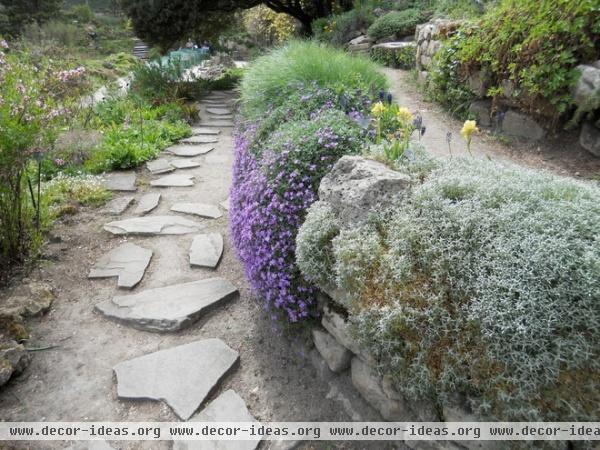
Alpine gardens are often composed of a mix of true alpine plants and plants that benefit from the same growing conditions. There are a vast array of plant choices, including low-growing perennials, dwarf trees, grasses and sedges, succulents, ground covers and bulbs. By combining different textures and colors and placing plantings between outcrops of rock, you can create a striking alpine garden that will provide interest year-round.
When planning an alpine garden, pick an area with full sun exposure that doesn’t have overhead trees competing for light. Good drainage is paramount; standing water around the roots of plants isn’t good for alpine plants.
Alpine gardens can vary in size and style. There are many options to explore in the world of alpines, including complementing your existing landscape and filling a container garden on a sunny patio.
Rock walls. The crevices and cracks between stones in a rock wall are perfectly suited for an alpine garden. Fill planting holes with a small amount of soil (making sure that water will drain freely through) and top-dress with a layer of gravel.
Choose trailing plant varieties in small pots (4-inch pots are perfect) for ease of installation and maximum effect. Artemisia schmidtiana ‘Nana’ (with delicate, silvery foliage that will creep over the wall in mounds) and Aubrieta (with prolific bright purple blooms in spring and fall) are some of my favorite trailing alpines.
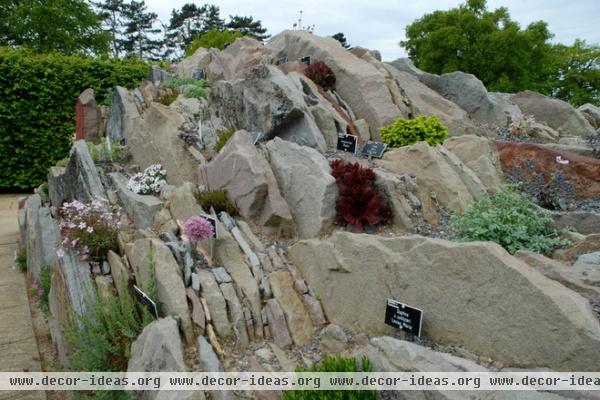
Custom-built features. If space allows, you can create a unique alpine garden with leftover landscape materials.
This alpine garden at Wisley Garden in England has slabs of stone set on end, the perfect growing environment for alpines. With the landscape elevated, the intricate details of the plants can be fully appreciated, and maintenance is much easier. The imposing scale of the stones also acts as an effective backdrop for the plants, giving the impression of a naturalized mountainscape. This is a great way to repurpose leftover paving stones after building a patio area in your garden.
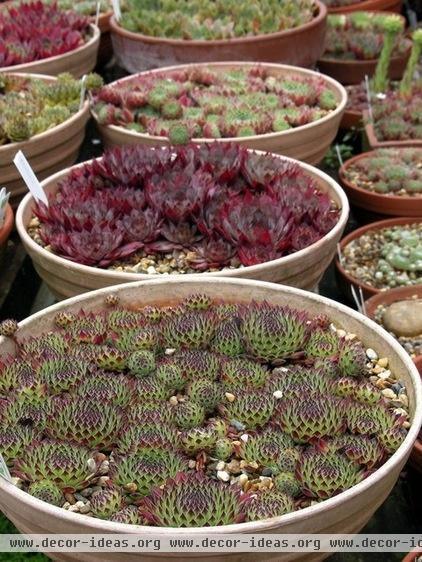
Planting in containers. A versatile solution for alpine gardens (especially in small spaces) is container planting. You can easily obtain sufficient drainage and select the size and style of the containers to suit your specific garden configuration. Stunning displays can be created by combining a collection of potted alpines or mixing and matching several varieties in a single container. Gardens with a classic or modern aesthetic equally benefit from the contrasting colors and textures of alpine plants.
Make sure the pots have drainage holes and add a bottom layer (a couple of inches will suffice) of rubble, stone chips, broken pot pieces or something similar to allow for optimal drainage. Add several small plants and top-dress with gravel, and you’re done.
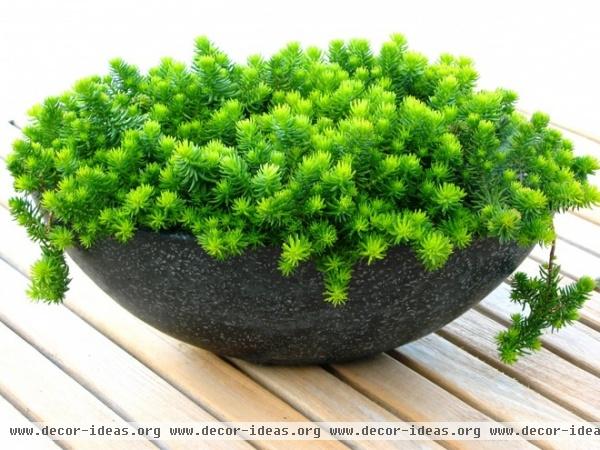
As with any plant, pay attention to the growth rate before selecting a site. Vigorous growers, like Sedum rupestre ‘Angelina’ (shown here), are better used on their own in a container to prevent their overtaking surrounding plants.
The contrast of the intricate, brightly colored foliage and clean modern lines of the bowl in this example would make this arrangement right at home in a modern landscape or patio garden.
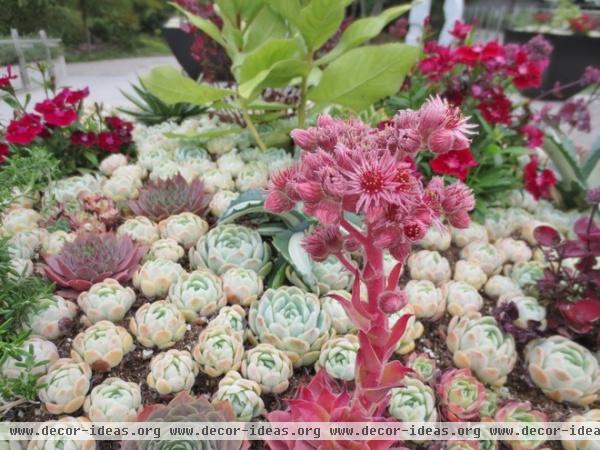
Many Sempervivum varieties (a popular succulent alpine plant available in a vast array of colors and sizes) are better behaved and a good choice for mixed alpine container arrangements. Their growth rate is much more manageable, and they create a carpet effect across the surface of the container. Mix and match varieties with different-size rosettes to create an undulating surface that comes to life with summer blooms.
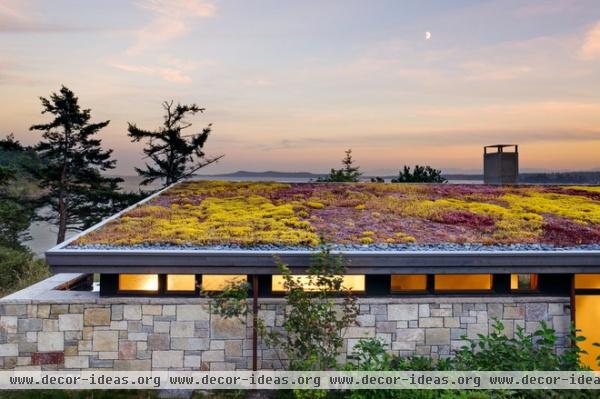
Green roofs. Alpine plants are also perfectly suited to green roof applications, because of their drought tolerance and low stature. Sedum varieties (shown here) vary greatly in texture and color, creating a detailed carpet of plantings that will add interest to an otherwise static surface.
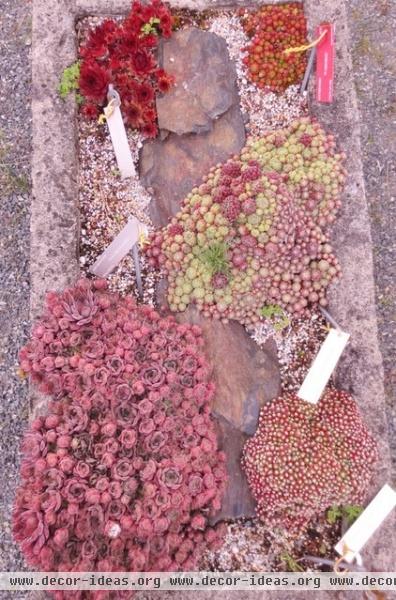
Hypertufa troughs. A hypertufa trough (like the one shown here) is another great option for a miniature landscape of alpines. It has the appearance of stone but weighs much less, as it is constructed from concrete and perlite. The rustic texture of hypertufa emulates the natural environment of alpine plants and allows for suitable drainage.
Troughs can either be purchased premade at many garden centers or easily constructed following instructions found online.
More: Let Nature Inspire Your Landscape: Mighty Mountain Gardens












